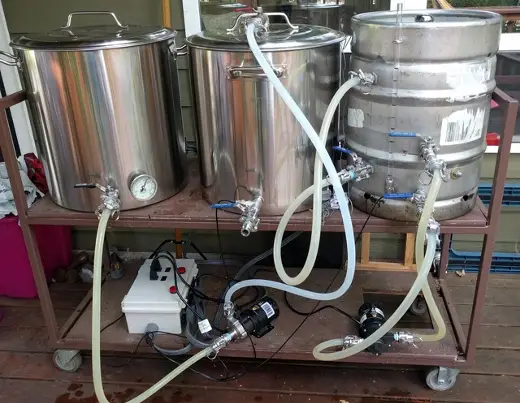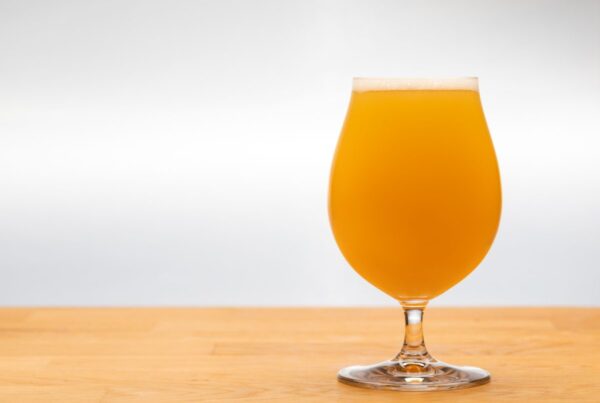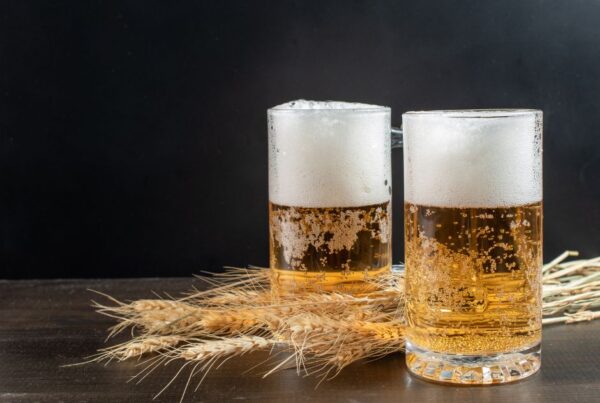Amber vs Dark Beers: How Are They Different?
Choosing a beer can feel like playing Minesweeper. You’re not just picking a beverage—you’re making a series of complex decisions about flavor, mouthfeel, and even how enjoyable your night is going to be. Make the “wrong” choice and you could end up with a beer that clashes with your meal or, worse, doesn’t meet the expectations of your discerning beer aficionado friends.
Upon entering the beer aisle, you’re hit with a literal wall of choices—from pale gold beers that are practically begging for a sunny day and a lawn chair, to brews with hues so dark, they could easily serve as the official beer of Gotham City. We’re talking shades so varied, they can make a Pantone color book look basic.
Hyperbole? Maybe a bit, but the point remains: when it comes to beer, there’s a wide range of beer colors to consider.
In this article, we’re going to focus on just two distinct types of beer: amber and dark.
Read on as we break down the similarities and differences that set these two kinds of beer apart, helping you make more informed choices whenever you next find yourself standing before the wall of brews.
The Brewing Process
Let’s begin by exploring the brewing process—the stage at which these two kinds of beer immediately start to go their separate ways.
- Dark beers are typically brewed longer and at higher temperatures—allowing for more interaction between the grains and malts. This extended exposure to heat and time results in a deep and intricate flavor profile, often reminiscent of roasted or coffee-like notes.
- Amber beers usually have shorter brewing times than dark beers and are brewed at more moderate temperatures. This abbreviated process allows the ingredients to come together more quickly, resulting in a beer that maintains a certain “crispness,” while still having the possibility for a range of subtle flavors.
As a result of these differences, dark beers tend to deliver richer and more intense flavors, while amber beers lean towards brighter and more “approachable” profiles.
Ingredients
All beers are mainly made of water, malt, hops, and yeast. What differentiates them is the specific type of malt used and its treatment during brewing.
- Dark Beers: These often contain roasted malts, contributing toasty flavors and heavier grains.
- Amber Beers: The presence of caramel malts lends these beers a sweeter and more mellow flavor.
Color
Dark beers are, rather predictably, darker in color; ranging from a deep brown to almost pitch black.
Amber beers, on the other hand, are characterized by varying shades of… well, amber.
Taste
Dark Beers
Flavor: Predominantly deep, robust flavors like chocolate, coffee, and occasionally dark fruit.
Body: Typically full-bodied and rich.
Alcohol Content: Higher ABVs (Alcohol By Volume) are common with dark beers.
Amber Beers
Flavor: Balanced is the keyword, featuring biscuit-like maltiness with some hop bitterness.
Body: Generally medium-bodied.
Alcohol Content: Moderately alcoholic, generally speaking.
A Quick Recap for the Skimmers
- Dark beers are complex, robust, and often pack a stronger alcoholic punch.
- Amber beers are well-balanced and usually feature moderate alcohol levels.
Dark and amber beers are as different as night and day, but each has its own set of appealing traits.
Armed with this extensive beer information, your next stroll down the beer aisle won’t be a head-scratching fiasco but more like a victory lap.
Indeed, comprehending the finer points of beer selection can be considered an achievement of its own. Once you flex your new knowledge of amber vs dark beers, even the most snobbish of craft beer aficionados will give you a nod of approval. And that is no small feat.
Whether you’re a casual sipper or a full-blown beer geek, we’ve got the content to quench your thirst for knowledge. Check out Hops Hunters for in-depth beer reviews, articles, guides, and tips on all things beer.






